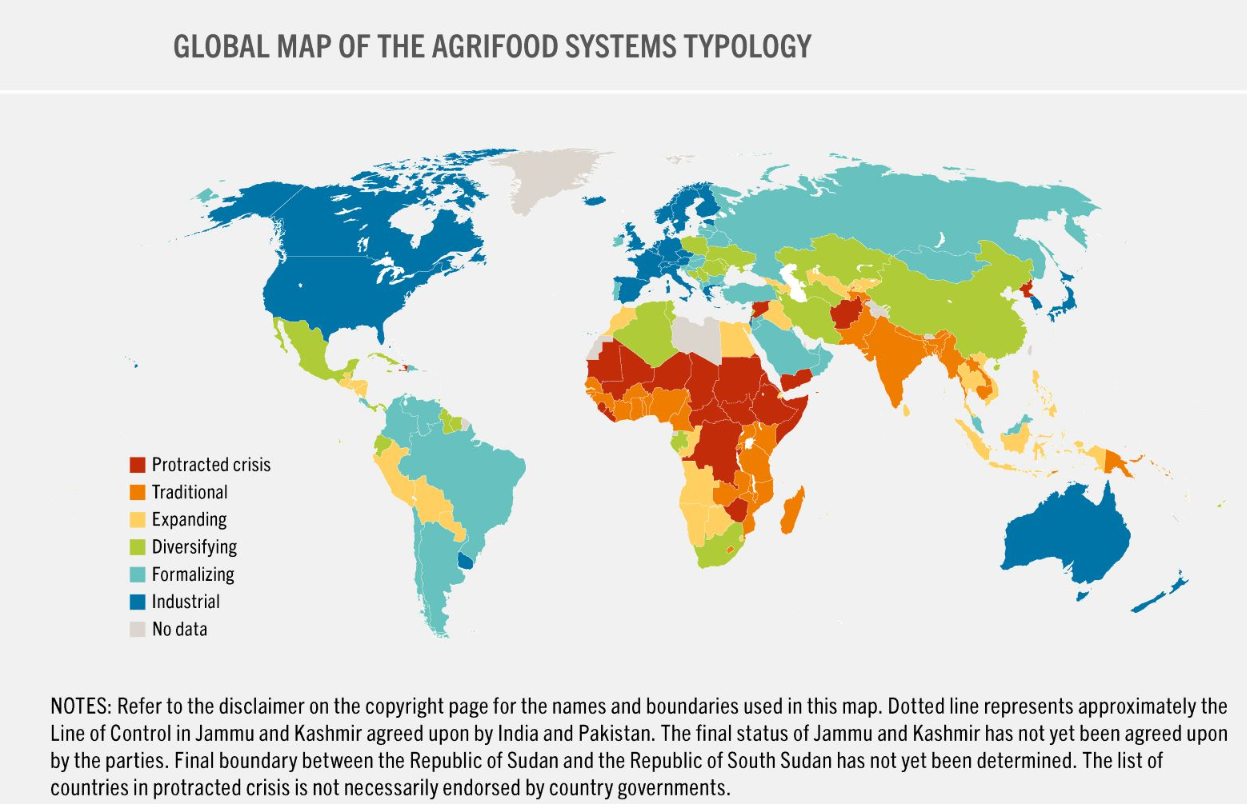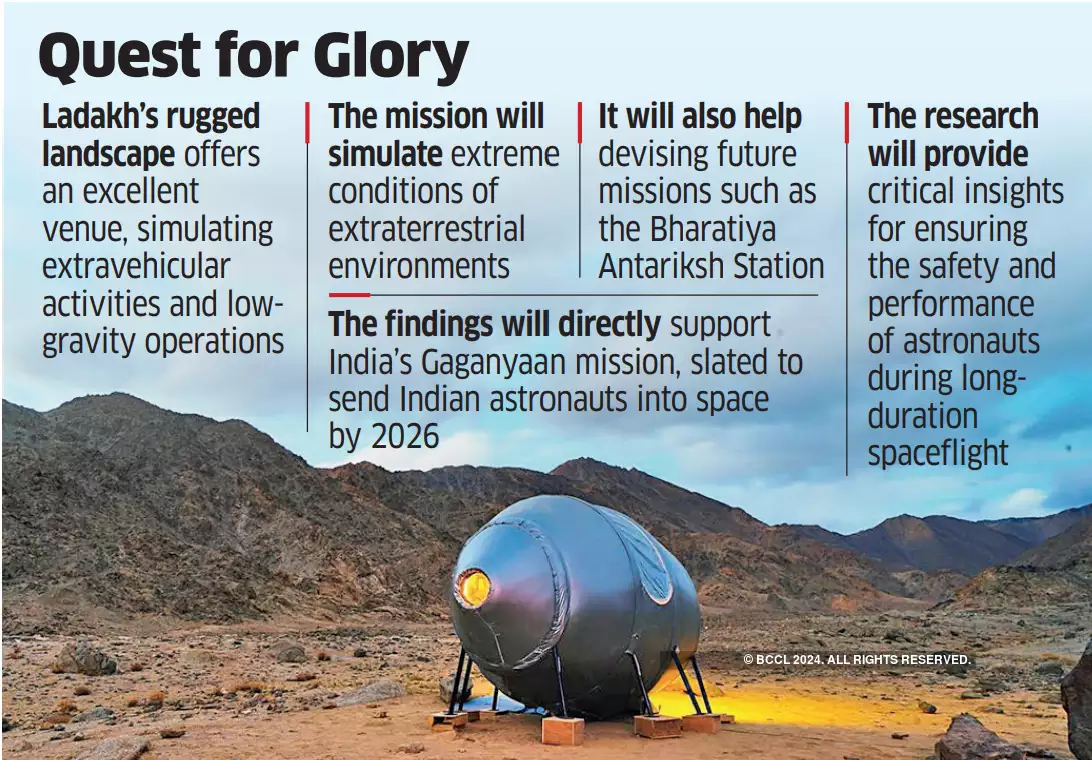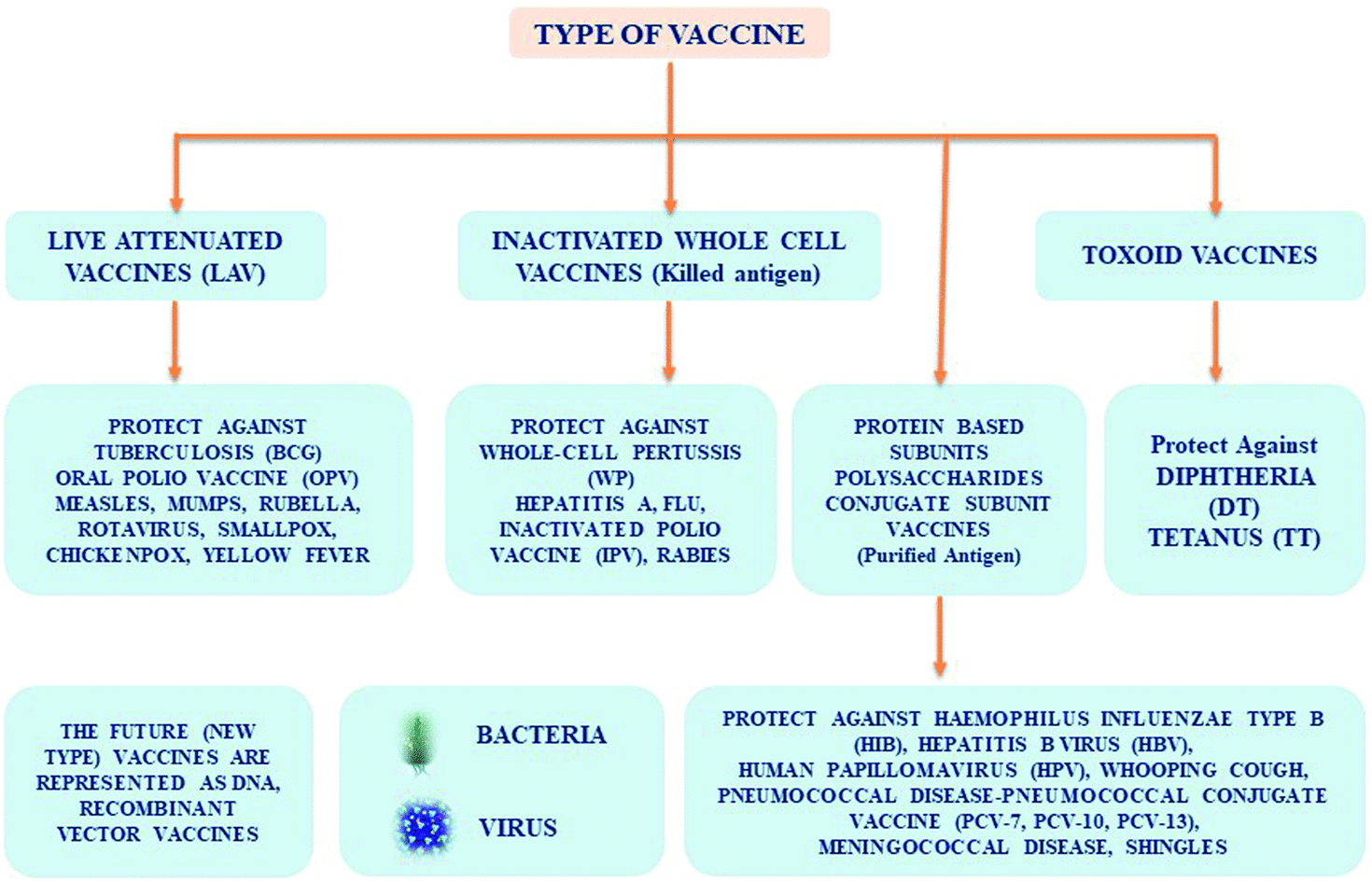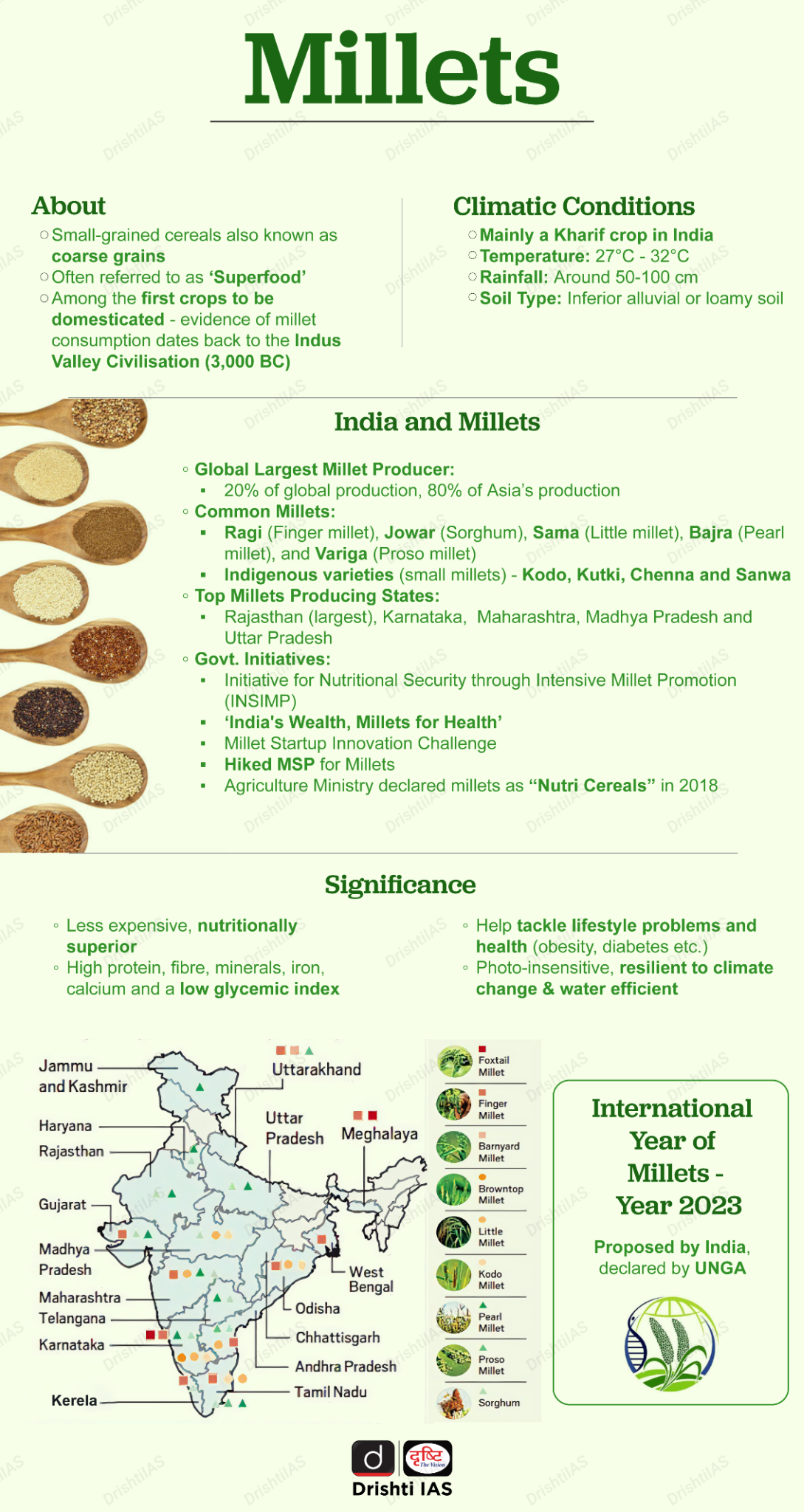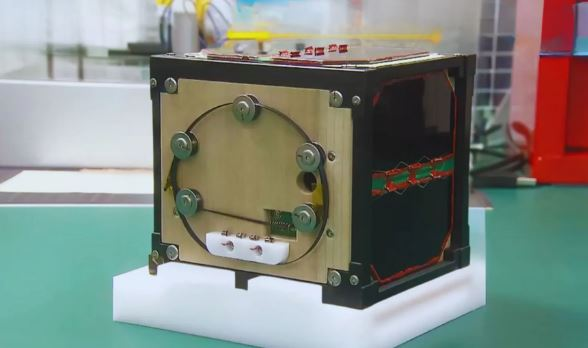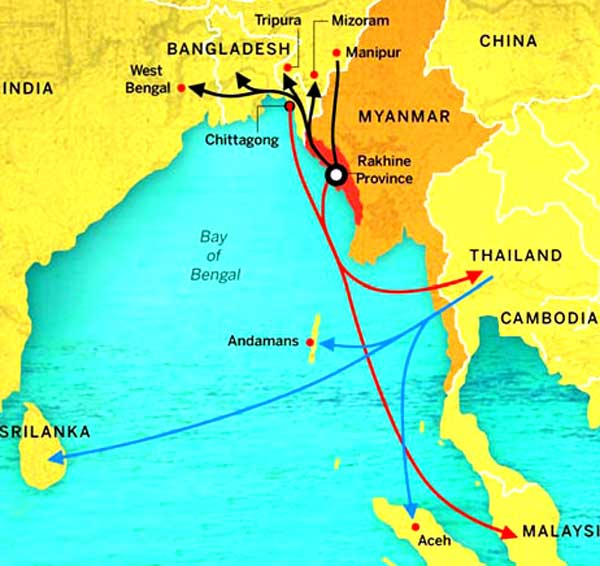Agriculture
State of Food and Agriculture 2024
For Prelims: Food and Agriculture Organization, United Nations, Non-communicable diseases, Greenhouse gas emissions, Sustainable Development Goals, International Fund for Agricultural Development, National Mission for Sustainable Agriculture, Eat Right Initiative
For Mains: Food security, Agrifood Systems and Sustainability, India’s Agrifood System and Hidden Costs
Why in News?
The State of Food and Agriculture 2024 report by the Food and Agriculture Organization (FAO) of the United Nations has revealed staggering global agrifood hidden costs of approximately USD 12 trillion annually, primarily driven by unhealthy dietary patterns and environmental degradation.
- This report examines the often-overlooked factors that contribute to these costs, urging a transformation of the global agrifood systems.
Note
Hidden costs refer to the economic burdens that are not reflected in the market price of food products. These include health costs, environmental degradation, and social inequities that arise from the current agrifood system.
What are the Key Highlights of the State of Food and Agriculture 2024?
- Global Hidden Costs: Hidden costs of agrifood systems amount to approximately USD 12 trillion annually.
- 70% of these costs (USD 8.1 trillion) are linked to unhealthy dietary patterns and associated non-communicable diseases (NCDs) like heart disease, stroke, and diabetes.
- Insights on India: India's hidden costs, totalling USD 1.3 trillion, are the third largest globally, following China (USD 1.8 trillion) and the United States (USD 1.4 trillion).
- These costs reflect significant health, social, and environmental challenges tied to its agrifood system.
- Over 73% of these costs stem from dietary risks, such as high consumption of processed foods and low intake of plant-based foods.
- The overconsumption of processed foods and additives costs India USD 128 billion annually, primarily due to diseases like heart disease, stroke, and diabetes.
- India’s insufficient consumption of plant-based foods and beneficial fatty acids adds USD 846 billion in hidden costs, further burdening healthcare systems.
- Low wages and low productivity among agrifood workers, exacerbated by distributional failures in the agrifood system, lead to poverty in India.
- Hidden Costs by Agrifood System Types: The report categorises agrifood systems into six types, they are protracted crisis, traditional, expanding, diversifying, formalising, and industrial each with distinct hidden cost profiles.
- In most systems, low intake of whole grains, fruits, and vegetables is the primary dietary risk. However, in systems like protracted crises and traditional systems, low fruit and vegetable consumption is a major concern.
- High sodium intake increases from traditional to formalising systems, peaking in formalising systems and decreasing in industrial systems.
- The consumption of processed and red meats rises steadily in more industrialised systems.
- Environmental and Social Costs: Significant environmental costs arise from unsustainable agricultural practices, particularly in diversifying agrifood systems, with costs such as greenhouse gas emissions and nitrogen runoff reaching USD 720 billion.
- Countries facing prolonged crises bear significant relative environmental costs, reaching up to 20% of the Gross Domestic Product (GDP).
- Traditional and protracted crisis systems suffer the highest social costs, including poverty and undernourishment, which represent a significant portion of GDP in these regions (8% to 18%).
- Recommendations for Transformative Change:
- True Cost Accounting: Implementing true cost accounting to better capture hidden costs and inform decision-making.
- Healthier Diets: Policies to make nutritious food more affordable and accessible, reducing health-related hidden costs.
- Sustainability Incentives: Providing financial and regulatory incentives for adopting sustainable practices and reducing emissions.
- Consumer Empowerment: Clear, accessible information on the environmental, social, and health impacts of food choices to guide consumer behaviour.
- Importance of Collective Action: A call for cooperation among agribusinesses, governments, financial institutions, international organisations, and consumers to drive systemic change.
- Focus on SDGs: The transformation of global agrifood systems is essential for achieving the Sustainable Development Goals (SDGs) and ensuring food security, nutrition, and sustainable development.
Agrifood Systems
- The FAO defines agrifood systems as encompassing all activities from agricultural production to food consumption, including processing, distribution, and waste management.
- These systems are influenced by economic, social, and environmental factors, affecting how food is produced, distributed, and consumed.
- With rapid urbanisation and changing dietary preferences, agrifood systems now face pressures that challenge their sustainability and ability to provide nutritious food.
How is India Working Towards Sustainable Food Systems?
- According to FAO, a sustainable food system (SFS) balances economic profitability, social equity, and environmental protection to ensure food security for future generations.
- The National Food Security Act (NFSA) of 2013, provides food entitlements to over 800 million citizens, demonstrating India’s commitment to ensuring food security.
- India’s Initiatives for SFS:
What are India’s Challenges in SFS?
- Climate Change: In recent years, India has been experiencing changing weather patterns, erratic rainfall, and extreme events (droughts, floods, and heatwaves) affect crop yields and food security.
- Environmental Degradation: Excessive use of chemical fertilisers and pesticides can lead to soil degradation, water pollution, and harm to biodiversity.
- Key concerns related to natural resources include declining yields, soil fertility, soil organic carbon (SOC) levels, and water scarcity.
- Inconsistent Ingredient Limits: There is an inconsistency in the limits for ingredients like sugar and salt in processed foods between Indian standards and those set by the World Health Organization (WHO).
- This discrepancy complicates efforts to regulate and ensure the nutritional quality of processed foods, potentially undermining public health initiatives aimed at reducing diet-related diseases.
- Sanitary and Phytosanitary Standards: India’s agri-exports are sometimes rejected in key markets due to quality issues, highlighting the need for improved standards.
- Low Productivity and Income: A large proportion of Indian farmers own small landholdings, which limits their productivity and income.
- Many farmers rely on outdated methods, leading to low yields and inefficient resource use.
- Limited Trade Collaboration: India's trade agreements lack substantial discussions on SFS, reducing opportunities for growth through mutual agreements on standards.
- Absence of Export Strategy and Data: There is a lack of product-specific export strategies and comprehensive data to support SFS-aligned trade planning.
What is Needed for a Sustainable and Inclusive SFS in India?
- Sustainable Practices: Adoption of sustainable water usage, soil health restoration, and environmentally friendly farming methods.
- Support for Smallholder Farmers: Enhancing access to financial services, technology, and markets for marginalised farmers.
- Implement Farm-to-Fork Traceability: Product traceability is critical for ensuring quality, safety, and sustainability across the food supply chain.
- Collaboration with International Agencies: The FAO, International Fund for Agricultural Development, World Food Programme (WFP), and the Indian government promote agricultural reforms and support smallholder farmers through education, technology, and financial resources.
- Enhance Quality Testing and Certification: Strengthening quality control through testing and certification processes will help Indian agri-products meet international standards.
- Strengthening Social Safety Nets: To support non-agricultural families, food distribution systems need to be efficient, ensuring affordability and accessibility.
Conclusion
India faces significant hidden costs in its agrifood system, driven by unhealthy diets and environmental degradation. While progress has been made, challenges like climate change, export restrictions, and low productivity hinder progress. A holistic approach, focusing on sustainable practices, support for smallholder farmers, and international collaboration, is crucial for building a resilient and inclusive agrifood system aligned with global sustainability goals.
|
Drishti Mains Question: Evaluate India’s agrifood system and identify the major hidden costs. How can India address these challenges to achieve sustainable food systems? |
UPSC Civil Services Examination Previous Year Question (PYQ)
Prelims
Q. The FAO accords the status of ‘Globally Important Agricultural Heritage System (GIAHS)’ to traditional agricultural systems. What is the overall goal of this initiative? (2016)
- To provide modern technology, training in modern farming methods and financial support to local communities of identified GIAHS so as to greatly enhance their agricultural productivity.
- To identify and safeguard eco-friendly traditional farm practices and their associated landscapes, agricultural biodiversity and knowledge systems of the local communities.
- To provide Geographical Indication status to all the varieties of agricultural produce in such identified GIAHS.
Select the correct answer using the code given below:
(a) 1 and 3 only
(b) 2 only
(c) 2 and 3 only
(d) 1, 2 and 3
Ans: (b)
Mains:
Q. How far is Integrated Farming System (IFS) helpful in sustaining agricultural production? (2019)


Science & Technology
3rd Indian Space Conclave and India’s First Analog Mission
For Prelims: Indian Space Research Organisation, Chandrayaan-3, Gaganyaan, European Union, New Space India Limited, National Aeronautics and Space Administration, Analog Mission
For Mains: Satellite Communication, Space Exploration and Indian Ambitions, Analog Missions and Space Research
Why in News?
The 3rd Indian Space Conclave in New Delhi spotlighted India's expanding space capabilities, with a focus on Satellite Communication (Satcom) and Indo-European Union Space partnerships. Key discussions explored Satcom’s role in advancing Digital India and India’s ambitious space goals.
- In another development, India’s first Mars and Moon analog mission was inaugurated in Leh, Ladakh, led by Indian Space Research Organisation (ISRO), the mission simulates extraterrestrial conditions for space habitat testing.
What are the Key Highlights of the 3rd Indian Space Conclave?
- Satellite Communication (Satcom): The Minister of State for Communications and Rural Development, highlighted Satcom’s transformative role in Digital India.
- Satcom applications support various sectors such as telecommunications, disaster management, agriculture, healthcare, and education, reaching underserved regions.
- The SatCom Reform 2022 policy promotes innovation and public-private partnerships in space technology.
- India’s Rise as a Global Space Leader: India’s achievements, including Chandrayaan-3 and the upcoming Gaganyaan missions, signify its leading role in space exploration .
- India now serves as a global partner in space, aiming for a robust network that complements terrestrial infrastructure.
- Indo-EU Space Collaboration: European Union ambassador commended India as a dynamic space power, highlighting shared goals in space exploration.
- Proposed joint initiatives include Earth observation, training, and space security.
- The 2025 EU-India Summit is expected to further strengthen cooperation in space governance and peaceful use of space.
- India is set to launch the EU’s Proba-3 satellite, focused on observing the Sun, marking a milestone in Indo-EU collaboration.
- This is India’s third launch for the EU, following previous Proba-1 and Proba-2 missions, strengthening ISRO’s reputation as a trusted international partner.
- Space Startups: The rise of space-focused startups was acknowledged following the 2020 space sector reforms, with India now having over 300 space-focused startups contributing to economic growth and innovation.
- This surge in startups has curbed brain drain, attracting Indian talent back from global agencies like NASA.
- Ambitions of India’s Space Program: India’s long-term objectives highlight the Gaganyaan human spaceflight mission, a crewed lunar landing by 2040, and an Indian space station by 2035. Plans for space tourism by 2040 further highlight India’s dedication to innovative and inclusive space exploration.
Space Sector Reforms 2020
- In 2020, India announced Space Sector Reforms, a major transformation of the Indian Space Sector with enhanced participation of private players in the Indian space programme and playing key roles to boost India’s market share in the Global Space Economy.
- Setting up of Indian National Space Promotion and Authorisation Centre (IN-SPACe) and enhancing the role New Space India Limited (NSIL) are the two major areas in the reform.
- IN-SPACe, an autonomous agency under the Department of Space, aims to foster industry, academia, and startups, regulate non-governmental space activities, and capture a larger share of the global space economy. Its headquarters are in Ahmedabad.
- NSIL, headquartered in Bengaluru, is a wholly owned Government of India company under the Department of Space (DOS), is the commercial arm of ISRO responsible for enabling Indian industries to undertake high technology space-related activities and promoting commercial exploitation of the Indian space programme.
- Setting up of Indian National Space Promotion and Authorisation Centre (IN-SPACe) and enhancing the role New Space India Limited (NSIL) are the two major areas in the reform.
Satcom Reforms 2022
- It was introduced by the Department of Telecommunications (DoT), aimed to streamline the satellite-based communication network application process and encourage private sector participation.
- By reducing the processing time from 6-8 months to 6 weeks, the reforms make it easier for service providers to establish satellite communication systems.
- Reforms aim to enhance Ease-of-Doing-Business by reducing charges at different stages and boost innovation in the space sector.
What is India’s First Mars and Moon Analog Mission?
- About: Analog missions are field tests conducted in locations that resemble extreme space environments. They are crucial for solving problems related to spaceflight research.
- India’s first Mars and Moon Analog Mission, led by the ISRO in collaboration with AAKA Space Studio, the University of Ladakh, and supported by the Ladakh Autonomous Hill Development Council.
- Objective: This mission simulates life in an interplanetary habitat to tackle challenges of establishing a sustainable base beyond Earth, supporting India’s space ambitions.
- It focuses on Mars and Moon habitat conditions, studying sustainability, life support systems, and psychological well-being in isolation to understand human adaptation to harsh environments.
- Ladakh, Ideal for Space Testing: Ladakh was chosen for its unique environmental characteristics that closely mirror those of Mars and the Moon. The region’s high altitude, dry climate, and extreme temperature fluctuations make it an ideal location for testing space habitat technologies.
- With temperatures ranging from 15°C to -10°C, the mission simulates the thermal challenges of extraterrestrial environments.
- Additionally, the oxygen levels in Ladakh are only 40% of those at sea level, providing a perfect opportunity to test life support systems designed for low-pressure conditions similar to those on Mars.
- The region's rocky, sandy soil also resembles Martian and lunar regolith, making it ideal for research on rover mobility and in-situ resource utilisation.
- Technological Testing: Researchers will test advanced technologies to support space habitats, including:
- Circadian Lighting: Simulates daylight cycles to maintain sleep patterns and well-being.
- Hydroponics: A system for sustainable food growth in space, ensuring astronaut nutrition.
- Standalone Solar Power System: Provides renewable energy for habitat independence.
- Significance of Analog Mission: It helps scientists observe the physical, mental, and operational conditions of space while remaining on Earth.
- Analog missions prepare astronauts for near-term and future exploration to asteroids, Mars, and the Moon.
Analog Missions Worldwide
- Desert Research and Technology Studies (Desert RATS): Led by National Aeronautics and Space Administration (NASA), it is primarily conducted in the deserts of Arizona, USA.
- Desert RATS is a field campaign that tests mission rover and extravehicular activity in challenging environments to simulate conditions on the Moon and Mars.
- NASA Extreme Environment Mission Operations (NEEMO): Astronauts live in Aquarius, the world's only undersea research station.
- Hawai‘i Space Exploration Analog and Simulation (HI-SEAS): It is a Mars and Moon exploration analog research station, currently operated by the International MoonBase Alliance(IMA).
- The IMA is a non-profit organisation that gathers leading scientists, educators, and entrepreneurs to promote lunar exploration.
|
Drishti Mains Question: How does India’s Mars and Moon analog mission contribute to the country’s space exploration goals? |
UPSC Civil Services Examination, Previous Year Question (PYQ)
Prelims
Q. Consider the following statements: (2016)
The Mangalyaan launched by ISRO
- is also called the Mars Orbiter Mission
- made India the second country to have a spacecraft orbit the Mars after USA
- made India the only country to be successful in making its spacecraft orbit the Mars in its very first attempt
Which of the statements given above is/are correct?
(a) 1 only
(b) 2 and 3 only
(c) 1 and 3 only
(d) 1, 2 and 3
Ans: (c)
Mains
Q.1 What is India’s plan to have its own space station and how will it benefit our space programme? (2019)
Q.3 What is the main task of India’s third mood mission which could not be achieved in its earlier mission? List the countries that have achieved this task. Introduce the subsystems in the spacecraft launched and explain the role of the ‘Virtual Launch Control Centre’ at the Vikram Sarabhai Space Centre which contributed to the successful launch from Sriharikota. (2023)

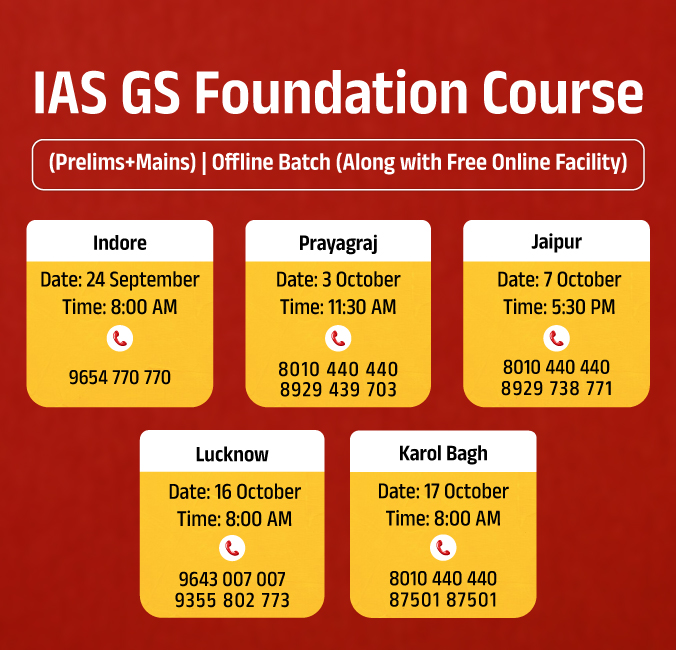
Agriculture
Nano Coated Fertilisers
For Prelims: Nano Fertilisers, Nutrient Use Efficiency, Carbon Nanotubes (CNTs), Fullerenes, Fullerols, Precision Agriculture, Nitrogen Metabolism, Photosynthesis, Biofortification, Soil Contamination, Nitrogen Fixation, Rhizobium, Azotobacter, Ecotoxicity, Phosphate Rock.
For Mains: Use of nanotechnology in agriculture, Advantages and challenges associated with nanotechnology.
Why in News?
Recently, Indian scientists have developed nano coated muriate of potash (nano fertilisers) which can enhance the nutrient use efficiency (NUE) of fertilisers.
- The coating made of nanoclay-reinforced binary carbohydrates can reduce the recommended fertiliser dose and maintain enhanced crop production.
- It is mechanically stable, biodegradable and hydrophobic which can enhance NUE by their slow release in soil.
- NUE is the efficiency of a plant in using applied or fixed nitrogen for biomass production.
What are Key Facts About Nano Fertilisers?
- About Nanofertilisers: Fertilisers coated with nanomaterials (particles in the nanoscale range of 1-100 nanometer) are called Nanofertilisers.
- These nanomaterials enable controlled release of nutrients into the soil, optimising nutrient availability to plants over a longer period.
- Nanomaterial Components:
- Inorganic Materials: Common inorganic nanomaterials used for nanofertilizers include:
- Metal Oxides: Zinc oxide (ZnO), titanium dioxide (TiO2), magnesium oxide (MgO), and silver oxide (AgO).
- Silica Nanoparticles: These provide high surface area, biocompatibility, and non-toxicity, enhancing crop quality and supporting sustainable agriculture, especially under stress like salinity.
- Hydroxyapatite Nanohybrids: They help in delivering calcium and phosphorus to plants.
- Organic Materials: Common organic nanomaterials used for nanofertilizers include:
- Chitosan: It is a biodegradable, natural material which helps in delivering nutrients efficiently.
- Carbon-based Nanomaterials: Organic nanomaterials such as carbon nanotubes (CNTs), fullerenes, and fullerols increase the rate of germination, the chlorophyll content, and the protein content.
- Inorganic Materials: Common inorganic nanomaterials used for nanofertilizers include:
- Types of Nanofertilizers: Nanofertilisers can be classified based on the method of preparation.
- Nanoscale Coating Fertilisers: These fertilisers have nutrients coated in nanoparticles for slow and controlled release.
- Nanoscale Additive Fertilisers: Nutrients are added to nano-sized adsorbents, keeping them stable and gradually available to plants.
- Nanoporous Materials: Fertilisers in nanoporous materials release nutrients slowly, ensuring plants absorb them fully.
- Applications in Agriculture:
- Precision Agriculture: Nanotechnology is used in precision agriculture to optimise water and fertiliser use, reducing waste and energy consumption.
- In Precision agriculture, inputs are utilised in precise amounts to get increased average yields, compared to traditional cultivation techniques.
- Soil and Plant Health: Nanofertilisers boost seed germination, nitrogen metabolism, photosynthesis, protein and carbohydrate production, and stress tolerance, leading to healthier crops.
- Long-Term Soil Fertility: Nanofertilisers release slowly, helping maintain or improve soil fertility for sustainable crop production.
- Precision Agriculture: Nanotechnology is used in precision agriculture to optimise water and fertiliser use, reducing waste and energy consumption.
What are the Advantages of Nanofertilisers?
- Enhanced Nutrient Efficiency: Nanofertilisers can minimise nutrient loss due to leaching and runoff, and reduce their fast degradation and volatility. This improves soil fertility and ensures that plants receive nutrients more efficiently.
- Improved Crop Productivity: The slow and controlled release of nutrients can lead to increased crop yield over time, as plants can access nutrients when needed, resulting in better growth and development.
- High Surface Area and Penetration Ability: Nanofertilizers possess a high surface area-to-volume ratio, allowing for better nutrient uptake by plant roots. This property also facilitates the penetration of nutrients deeper into the soil.
- Biofortification: Nanofertilisers can be used to enhance the nutritional content of crops by supplying essential micronutrients, such as iron, zinc, and iodine, through nano-based biofortification.
- Environmental Benefits: Nanofertilisers can reduce environmental hazards caused by traditional fertilisers, such as runoff and soil contamination, promoting eco-friendly farming practices.
- Cost Efficiency: Nanofertilisers can minimise costs in the long run by reducing the need for frequent applications. E.g., While conventional urea has an efficiency of about 25%, the efficiency of liquid nano urea can be as high as 85-90%.
- Recent advances in manufacturing processes have made them affordable for small-scale farmers and plant breeders.
- Compatibility with Biofertilizers: Nanofertilisers can complement biofertilisers by supporting the activities of beneficial microorganisms in the soil. For example, enhanced nitrogen fixation by Rhizobium and Azotobacter.
- Nano-composite fertilisers boost rhizosphere bacteria, encouraging secondary metabolites that enhance plant growth by promoting root surface colonisation.
What Challenges are Involved in Use of Nanofertilisers?
- Impact on Environmental: Nanofertilisers may have potential ecotoxicity risks to the soil, water, and non-target organisms.
- Ecotoxicity studies how chemicals, physical agents, or biological stressors harm organisms and the environment.
- Toxicity to Humans: Nanoparticles can penetrate biological systems more easily than larger particles, which raises potential risks to both human health and the environment.
- Impact on Soil Microorganisms: Metal or metal oxide nanoparticles may disrupt soil ecosystems, potentially harming beneficial microbes essential for nutrient cycling and soil fertility.
- Lack of Legislation and Regulation: Currently, there is no adequate legislation or risk management system in place to regulate the use of nanofertilizers which raises concerns about the safety and effectiveness of nanofertilizers.
- The use of nanomaterials in agriculture raises concerns regarding regulations and safety standards for both human health and environmental protection.
- Bioaccumulation: The long-term persistence of nanofertilizers in plant systems may lead to build-up of nanoparticles in the food chain.
- Decline in Yield: A study has found that there was a 21.6% decrease in wheat yield and a 13% decrease in rice yields with the use of nano urea in India.
Way Forward
- Supporting Small-Scale Farmers: Processing abundant phosphate rock resources can make phosphates nanofertilisres more affordable and effective for small-scale farmers.
- Enhance Farmers’ Reach: Enhance reach of the nano fertiliser in both micro and macro nutrients through Krishi Vigyan Kendras (KVKs), farmer education campaigns etc.
- Standardisation and Regulation: For nanofertilizers to be widely adopted, there must be clear regulations and standards governing their production, application, and safety.
- Invest in Fundamental Research: Continued research is needed to understand how nanoparticles interact with plants, focusing on nano-toxicity and safety.
- Optimise Nanomaterials: Biodegradable nanomaterials, such as those derived from plant-based sources or microorganisms, can reduce potential toxicity and environmental hazards.
|
Drishti Mains Question: Nanotechnology holds immense potential for enhancing agricultural productivity, but its adoption raises several concerns regarding safety and environmental sustainability. Critically examine. |
UPSC Civil Services Examination, Previous Year Question (PYQ)
Prelims
Q.With reference to chemical fertilizers in India, consider the following statements: (2020)
- At present, the retail price of chemical fertilizers is market-driven and not administered by the Government.
- Ammonia, which is an input of urea, is produced from natural gas.
- Sulphur, which is a raw material for phosphoric acid fertilizer, is a by-product of oil refineries.
Which of the statements given above is/are correct?
(a) 1 only
(b) 2 and 3 only
(c) 2 only
(d) 1, 2 and 3
Ans: (b)
Q.There is some concern regarding the nanoparticles of some chemical elements that are used by the industry in the manufacture of various products. Why?(2014)
- They can accumulate in the environment, and contaminate water and soil.
- They can enter the food chains.
- They can trigger the production of free radicals.
Select the correct answer using the code given below:
(a) 1 and 2 only
(b) 3 only
(c) 1 and 3 only
(d) 1, 2 and 3
Ans: (d)
Mains
Q. What do you understand about nanotechnology and how is it helping in the health sector? (2020)
Q. How can biotechnology help to improve the living standards of farmers? (2019)
Q. Why is there so much activity in the field of biotechnology in our country? How has this activity benefitted the field of biopharma. (2018)


Important Facts For Prelims
Appointment of Chief Justice of India
Why in News?
Recently, the President of India administered the oath of office to Justice Sanjiv Khanna as the Chief Justice of India (CJI).
- He succeeded Justice D.Y. Chandrachud, becoming the 51st CJI.
Justice Sanjiv Khanna Key Judicial Rulings
- He was part of several Constitution Bench rulings, including the one upholding the abrogation of Article 370 of the Constitution and striking down the 2018 electoral bonds scheme, among others.
- He was also part of the recent majority ruling in the Aligarh Muslim University (AMU) minority status determination case.
- He supported the use of Electronic Voting Machines (EVMs) in elections, rejecting calls to revert to paper ballots.
What are Key Provisions Related to CJI?
- Appointment: A Supreme Court judge is appointed by the President under Article 124 (2) of the Constitution. As per the convention, the senior-most judge of the Supreme Court is designated as the CJI.
- The seniority is measured by the length of service on the Supreme Court.
- Qualification: A person to be appointed as a Supreme Court judge, should have the following qualifications:
- He should be a citizen of India.
- He should have been a judge of a High Court (or high courts in succession) for five years; or
- He should have been an advocate of a High Court (or High Courts in succession) for ten years; or
- He should be a distinguished jurist in the opinion of the president.
- Role of CJI: As the "Master of the Roster," the CJI holds the authority to assign specific cases to particular benches and determine the schedule for their hearings in the Supreme Court.
- CJI (along with collegium of four senior most judges of SC) is consulted by the President for the appointment of judges in the SC and the High Court.
- CJI appoints ad-hoc SC judges under Article 127 of the Constitution.
- With the approval of the President, the CJI can change the seat of the SC from Delhi to any other place.
- Removal: The CJI can be removed by the President only after Parliament presents an address, supported by a special majority in both Houses (a majority of total members and at least two-thirds of those present and voting).
Appointment of CJI in Other Democratic Countries
- United States: The Chief Justice has a life tenure i.e., Chief Justice can serve until he/she is impeached.
- United Kingdom: The Judicial Appointments Commission appoints the Lord Chief Justice through a special panel from the Appeal Court Judges or from the Supreme Court.
- The tenure for the Lord Chief Justice is life, with a mandatory retirement age of 75.
UPSC Civil Services Examination, Previous Year Question (PYQ)
Prelims
Q. With reference to the Indian judiciary, consider the following statements: (2021)
- Any retired judge of the Supreme Court of India can be called back to sit and act as a Supreme Court judge by the Chief Justice of India with the prior permission of the President of India.
- A High Court in India has the power to review its own judgement as the Supreme Court does
Which of the statements given above is/are correct?
(a) 1 only
(b) 2 only
(c) Both 1 and 2
(d) Neither I nor 2
Ans: (c)
Q. With reference to National Legal Services Authority, consider the following statements: (2013)
- Its objective is to provide free and competent legal services to the weaker sections of the society on the basis of equal opportunity.
- It issues guidelines for the State Legal Services Authorities to implement the legal programmes and schemes throughout the country.
Which of the statements given above is/are correct?
(a) 1 only
(b) 2 only
(c) Both 1 and 2
(d) Neither 1 nor 2
Ans: (c)
Q. What is the provision to safeguard the autonomy of the Supreme Court of India? (2012)
- While appointing the Supreme Court Judges, the President of India has to consult the Chief Justice of India.
- The Supreme Court Judges can be removed by the Chief Justice of India only.
- The salaries of the Judges are charged on the Consolidated Fund of India to which the legislature does not have to vote.
- All appointment of officers and staffs of the Supreme Court of India are made by the Government only after consulting the Chief Justice of India.
Which of the statements given above is/are correct?
(a) 1 and 3 only
(b) 3 and 4 only
(c) 4 only
(d) 1, 2, 3 and 4
Ans: (a)


Important Facts For Prelims
World Immunisation Day 2024
Why in News?
Recently, World Immunisation Day was observed on 10th November to raise awareness about the vital role vaccines play in preventing infectious diseases and protecting public health.
- Immunisation is making a person resistant to an infectious disease by administering a vaccine to stimulate the immune system.
What are the Key Facts About Immunisation in India?
- Key Immunisation Programs in India:
- Universal Immunization Programme (UIP): Initially launched as the Expanded Programme on Immunization in 1978, it was rebranded as the UIP in 1985 when coverage expanded from urban to rural areas.
- In 1992, the UIP was incorporated into the Child Survival and Safe Motherhood Programme and later, in 1997, into the National Reproductive and Child Health Programme.
- Since 2005, under the National Rural Health Mission, the UIP has focused on ensuring vaccine access for every child, even in remote areas.
- India’s full Immunisation coverage for FY 2023-24 stands at 93.23% nationally.
- Mission Indradhanush (MI): MI was launched in December 2014 with a goal of achieving 90% full immunisation coverage.
- It focuses on areas with low immunisation rates, including hard-to-reach regions and communities with unvaccinated or partially vaccinated children.
- U-WIN Portal: It is a digital platform designed to streamline vaccine delivery and record-keeping, enabling easy access and management of immunisation records.
- It allows for ‘Anytime Access’ and ‘Anywhere’ vaccination, offering flexible scheduling options for recipients.
- It also generates a universal QR-based eVaccination Certificate and provides the option to create an Ayushman Bharat Health Account (ABHA) ID.
- Universal Immunization Programme (UIP): Initially launched as the Expanded Programme on Immunization in 1978, it was rebranded as the UIP in 1985 when coverage expanded from urban to rural areas.
- Public Health Milestones:
- COVID-19 Vaccination: Between 16th January 2021 and 6th January 2023, India had administered over 220 crore doses, covering 97% of eligible citizens with at least one dose and 90% with both doses.
- Polio Eradication: India was officially certified as polio-free in March, 2014.
- Maternal and Neonatal Tetanus (MNTE): India eliminated MNTE in April 2015, well ahead of the global target of December 2015.
- Yaws-Free: India became the first country to be officially recognized as yaws-free by the World Health Organization (WHO).
- Yaws is a chronic bacterial infection affecting skin, bone and cartilage.
- Smallpox: Smallpox was eradicated in India in 1977.
- Leprosy: Leprosy was eliminated in 2005.
- Kala-azar: India is close to achieving the elimination of Kala-azar as a public health problem.
- India has achieved WHO certification criteria for two consecutive years and needs to maintain this level for one more year to qualify for the certification.
Note
- Under UIP, immunisation is provided free of cost against 12 vaccine preventable diseases:
- Nationally against 9 diseases: Diphtheria, Pertussis, Tetanus, Polio, Measles, Rubella, severe form of Childhood Tuberculosis, Hepatitis B and Meningitis & Pneumonia caused by Haemophilus Influenzae type B.
- Sub-nationally against 3 diseases: Rotavirus diarrhoea, Pneumococcal Pneumonia and Japanese Encephalitis.
- UIP has helped reduce the under-5 mortality rate from 45 per 1000 live births in 2014 to 32 per 1000 live births.
UPSC Civil Services Examination, Previous Year Question (PYQ)
Prelims
Q.With reference to recent developments regarding ‘Recombinant Vector Vaccines’, consider the following statements: (2021)
- Genetic engineering is applied in the development of these vaccines.
- Bacteria and viruses are used as vectors.
Which of the statements given above is/are correct?
(a) 1 only
(b) 2 only
(c) Both 1 and 2
(d) Neither 1 nor 2
Ans: (c)
Q. Which one of the following statements is not correct? (2019)
(a) Hepatitis B virus is transmitted much like HIV.
(b) Hepatitis B, unlike Hepatitis C, does not have a vaccine.
(c) Globally, the number of people infected with Hepatitis B and C viruses arc several times more than those infected with HIV.
(d) Some of those infected with Hepatitis B and C viruses do not show the symptoms for many years.
Ans: (b)
Q.Consider the following diseases: (2014)
- Diphtheria
- Chickenpox
- Smallpox
Which of the above diseases has/have been eradicated in India?
(a) 1 and 2 only
(b) 3 only
(c) 1, 2 and 3
(d) None
Ans: (b)


Important Facts For Prelims
Branned Millets for Health Benefits
Why in News?
Recently, a study titled ‘Impact of debranning (the process of removing the outer bran layers from a cereal grain) on the nutritional, cooking, microstructural characteristics of five Indian small millets’ was published.
What are the Key Highlights of the Study?
- Nutritional Impact of De-branning: Removing the bran from millets reduces protein, dietary fibre, fat, mineral, and phytate content while increasing carbohydrates and amylose content.
- This diminishes their health benefits and increases their glycemic load.
- Reasons for De-branning Millets: De-branning and polishing millets extends their shelf life and reduces cooking time by making them softer.
- However, vacuum-sealing can extend the shelf life of whole-grain millets without removing the bran.
- Millets' Health Benefits: Millets contain minerals like iron, zinc, and calcium and have bioactive flavonoids that support health.
- They help prevent diabetes, manage hyperlipidemia, reduce weight, and lower blood pressure, with positive effects on cardiovascular disease (CVD).
- They are gluten-free and have a low glycemic index, beneficial for people with celiac disease or diabetes.
What are the Key Facts About Millet?
- About: It is a collective term referring to a number of small-seeded grasses that are cultivated as grain crops, primarily on marginal lands in dry areas in temperate, subtropical and tropical regions.
- Some of the common millets available in India are Ragi (Finger millet), Jowar (Sorghum), Sama (Little millet), Bajra (Pearl millet), and Variga (Proso millet).
- Global and Indian Production: India is the largest producer and exporter of millets, followed by Niger and China.
- Global millet production stood at 28 million metric tons in 2020, with major consumption in Africa and Asia.
- Millet Promotion: 2023 was recognized as the International Year of Millets by the Food and Agriculture Organization (FAO).
- The Indian government promotes millet production under the National Food Security Mission.
- Ecological and Economic Advantages: Millets are drought-tolerant, thrive in arid and semi-arid regions, and require minimal water, fertilisers, and pesticides.
- It serves dual purposes, used as both food and fodder, increasing farming efficiency.
UPSC Civil Services Examination, Previous Year Question (PYQ)
Prelims
Q. Which of the following are the objectives of ‘National Nutrition Mission’? (2017)
- To create awareness relating to malnutrition among pregnant women and lactating mothers.
- To reduce the incidence of anaemia among young children, adolescent girls and women.
- To promote the consumption of millets, coarse cereals and unpolished rice.
- To promote the consumption of poultry eggs.
Select the correct answer using the code given below:
(a) 1 and 2 only
(b) 1, 2 and 3 only
(c) 1, 2 and 4 only
(d) 3 and 4 only
Ans: (a)
Q.With reference to ‘Initiative for Nutritional Security through Intensive Millets Promotion’, which of the following statements is/are correct? (2016)
- This initiative aims to demonstrate the improved production and post-harvest technologies, and to demonstrate value addition techniques, in an integrated manner, with cluster approach.
- Poor, small, marginal and tribal farmers have larger stake in this scheme.
- An important objective of the scheme is to encourage farmers of commercial crops to shift to millet cultivation by offering them free kits of critical inputs of nutrients and micro irrigation equipment.
Select the correct answer using the code given below:
(a) 1 only
(b) 2 and 3 only
(c) 1 and 2 only
(d) 1, 2 and 3
Ans: (c)


Rapid Fire
Accessibility for Disabled Persons
Recently, The Supreme Court affirmed that the right to access environments, services, and opportunities for persons with disabilities (PWDs) is a human and fundamental right.
- Accessibility: The court urged the government to create universal accessible public and private spaces, services, and products as mandated in Rule 15 of the Rights of Persons with Disabilities Rules, 2017.
- Rule 15 of the Rights of Persons with Disabilities Rules, 2017 covers accessibility of physical environment, transport, and information and communication technology.
- Legal Framework: The Rights of Persons with Disabilities Act, 2016 aims to protect and promote the rights of persons with disabilities (PwDs).
- It aims to give effect to the United Nations Convention on the Rights of Persons with Disabilities (UNCRPD), which India ratified in 2007.
- A person with a benchmark disability is defined as someone with at least 40% of a specified disability.
- Initiatives Related to the Empowerment of the Disabled: Assistance to Disabled Persons for Purchase/fitting of Aids and Appliances, Accessible India Campaign, and Unique Disability Identification Portal.
Read More: Enhancing Accessibility for Persons with Disabilities


Rapid Fire
LignoSat
The world’s first wood-panelled satellite, LignoSat, was launched to test the viability of timber as a sustainable building material for future space missions.
- LignoSat, developed by Kyoto University and Sumitomo Forestry of Japan, is made with wooden panels crafted from a magnolia tree using traditional Japanese techniques, without screws or glue.
- It incorporates traditional aluminium structures and electronics, with wood serving as a casing material.
- The satellite aims to test wood's durability in extreme space conditions (temperatures ranging from -100°C to 100°C) and its ability to shield semiconductors from space radiation.
- Researchers believe wood could replace some metals in space exploration, drawing parallels to early 1900s wooden aeroplanes.
- Conventional satellites made of aluminium can damage the ozone layer when they burn up in the atmosphere. The growing number of satellites, including mega-constellations, raises concerns about space pollution.
- LignoSat, made of magnolia instead of aluminium, may have an advantage as it wouldn't introduce damaging pollutants when it falls back to Earth.
- Conventional satellites made of aluminium can damage the ozone layer when they burn up in the atmosphere. The growing number of satellites, including mega-constellations, raises concerns about space pollution.
Read more: Outer Space: Innovation, Security, and Sustainability


Rapid Fire
Acute Famine Conditions in Rakhine
The United Nations Development Program (UNDP) has warned that Myanmar's Rakhine state, home to the Rohingya minority, is on the brink of an acute famine due to a combination of internal conflicts, economic collapse, and natural disasters.
- Key factors for Acute Famine: Blockades restricting goods, hyperinflation, lack of income, reduced food production, absence of essential services.
- Predictions suggest domestic food production will cover only 20% of Rakhine's needs by March-April 2025. Over 2 million people are at risk of starvation by March-April 2025 due to declining domestic food production.
- The military-led government has limited humanitarian aid access, further exacerbating the crisis.
- Rakhine, the westernmost state in Myanmar, is one of the poorest regions, facing ongoing conflict, displacement, and poverty.
- For decades, the Rohingya, a Muslim ethnic minority in Myanmar, have faced discrimination and exclusionary citizenship laws, leading to hundreds of thousands fleeing persecution.
- In 2017, India signed a development program to help Myanmar build housing infrastructure for displaced persons in Rakhine State.
- UNDP was established in 1965 by the United Nations, aims to eliminate poverty and promote sustainable development, democratic governance, and climate resilience.
Read more: Ongoing Issues in Myanmar


Rapid Fire
H5N1 Reassortant Virus
Recently, human cases of novel reassortant H5N1 Bird flu virus were reported in Cambodia.
- The novel reassortant virus results from the mixing of clade 2.3.2.1c, which had been circulating in Southeast Asia, with the global 2.3.4.4b clade.
- H5N1 is one of several influenza viruses that causes a highly infectious respiratory disease in birds called avian influenza (or "bird flu").
- H5N1 bird flu was first identified in geese in China in 1996.
- It can infect people who work with infected animals or their byproducts (e.g., raw milk), such as dairy workers.
- The virus can spread from infected mammals to humans but does not transmit from person to person.
- The influenza virus is a single-stranded RNA virus with a lipid-containing envelope.
- Seasonal influenza vaccines do not protect against human infection with animal influenza A viruses, including H5N1 viruses.
Read More: H5N1 Bird Flu



